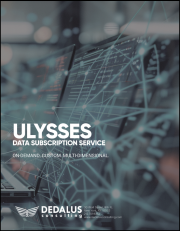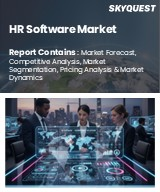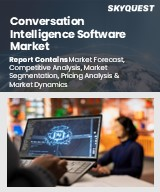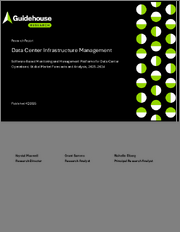
|
시장보고서
상품코드
1806197
멘토링 소프트웨어 시장 : 멘토링 유형, 학습 컨텐츠, 사용자 인터페이스 디자인, 애플리케이션 유형, 최종사용자, 전개 방식별 - 세계 예측(2025-2030년)Mentoring Software Market by Mentoring Type, Learning Content, User Interface Design, Application Type, End User, Deployment Type - Global Forecast 2025-2030 |
||||||
멘토링 소프트웨어 시장은 2024년에는 9억 1,624만 달러로 평가되었으며, 2025년에는 10억 4,378만 달러, CAGR 14.57%로 성장하여 2030년에는 20억 7,287만 달러에 달할 것으로 예측됩니다.
| 주요 시장 통계 | |
|---|---|
| 기준 연도 2024년 | 9억 1,624만 달러 |
| 추정 연도 2025년 | 10억 4,378만 달러 |
| 예측 연도 2030년 | 20억 7,287만 달러 |
| CAGR(%) | 14.57% |
멘토링 소프트웨어의 경영환경 : 중요한 촉진요인, 새로운 트렌드, 정보에 입각한 의사결정을 위한 전략적 배경을 밝힙니다.
멘토링 소프트웨어는 조직과 교육기관이 전문가 육성과 지식 교류를 촉진하는 방식을 변화시키는 힘으로 부상하고 있습니다. 디지털화가 빠르게 진행되는 가운데, 멘토와 멘티의 의미 있는 연결을 촉진하고 관리 워크플로우를 간소화하는 솔루션이 필수적입니다. 이 소개에서는 이러한 플랫폼의 진화를 조망하고, 개인화된 학습 경로에 대한 수요 증가부터 고급 분석 및 인공지능의 통합에 이르기까지 도입을 촉진하는 주요 요인에 초점을 맞추고 있습니다.
혼란한 상황과 전략적 전환 첨단 기술 통합과 진화하는 사용자 기대에 따라 멘토링 소프트웨어의 상황을 혁신합니다.
멘토링 소프트웨어 생태계는 인공지능, 데이터 분석, 모바일 접근성의 비약적인 발전에 힘입어 급속한 변화의 단계에 접어들었습니다. 플랫폼이 머신러닝을 통합하여 개인화된 컨텐츠 추천과 예측적 멘토링 매칭을 제공함에 따라, 수작업 페어링과 정적인 커리큘럼의 전통적인 모델은 역동적인 인텔리전스 기반 경험으로 대체되고 있습니다. 대체되고 있습니다. 그 결과, 조직은 멘토링 프로그램을 보다 정밀하게 확장하고, 멘티의 목표와 멘토의 전문 지식이 일치하는 것을 보장할 수 있게 되었습니다.
2025년 미국 관세가 멘토링 소프트웨어 생태계, 공급망, 국경 간 협업 역학에 미치는 종합적인 영향에 대한 종합적인 평가
2025년, 미국 수입 기술 부품 및 소프트웨어 서비스에 대한 관세의 누적 영향은 멘토링 플랫폼 제공업체와 고객에게 새로운 도전을 가져다주었습니다. 서버, 네트워킹 장비 등 하드웨어 수입 관세가 인상됨에 따라 온프레미스 도입에 대한 자본 지출이 증가하면서 많은 조직들이 인프라 전략을 재검토해야 하는 상황에 처해 있습니다. 그 결과, 클라우드 기반 솔루션은 관세로 인한 비용 증가에 직면하면서도 유연성과 비용 절감을 제공함으로써 더욱 매력적으로 다가오고 있습니다.
멘토링 유형, 컨텐츠 제공, 인터페이스 디자인, 애플리케이션 모델, 최종사용자, 배포 선호도 등 멘토링 소프트웨어의 시장 세분화 촉진요인을 밝힙니다.
시장 세분화에 대한 미묘한 이해를 통해 다양한 고객 요구와 배포 시나리오가 멘토링 소프트웨어의 상황을 어떻게 형성하고 있는지 알 수 있습니다. 멘토링 유형에 따라 조직은 그룹 멘토링 코호트, 일대일 페어링, 피어 투 피어 협업 네트워크, 주니어의 목소리에 힘을 실어주는 리버스 멘토링 방식 등으로 구분하고 있습니다. 각 형식은 개인 멘토링을 위한 강력한 스케줄링 도구부터 집단 학습을 위한 대화형 대시보드에 이르기까지 각기 다른 기능 우선순위와 참여 모델을 기반으로 합니다.
아메리카, 유럽, 중동 및 아프리카, 아시아태평양의 성장 궤도에서 멘토링 소프트웨어 시장을 형성하는 지역 역학을 매핑합니다.
지역별 동향을 자세히 살펴보면, 아메리카, 유럽, 중동 및 아프리카, 아시아태평양 지역별로 성장 촉진요인과 채택 패턴이 다르다는 것을 알 수 있습니다. 아메리카에서는 성숙한 디지털 인프라와 직원 교육에 대한 중요성이 멘토링 솔루션의 광범위한 도입을 촉진하고 있습니다. 이 지역의 기업들은 인재 파이프라인과 후계자 계획을 최적화하기 위해 고급 분석 및 인사 플랫폼과의 원활한 통합을 우선시하고 있습니다.
세계 시장 차별화 및 채택 추세를 주도하는 주요 멘토링 소프트웨어 공급업체들의 경쟁 전략과 혁신 하이라이트 분석
멘토링 소프트웨어 시장의 주요 업체들은 R&D 투자, 전략적 파트너십, 종합적인 서비스 포트폴리오를 통해 차별화를 꾀하고 있습니다. 시장을 선도하는 기업들은 대규모의 의미 있는 멘토-멘티 연결을 촉진하기 위해 예측 분석과 AI 기반 매칭 알고리즘으로 플랫폼을 지속적으로 강화하고 있습니다. 또한, 이들 조직은 인사, 학습 관리, 생산성 도구에 걸친 원활한 워크플로우를 가능하게 하는 타사와의 통합을 통해 방대한 생태계를 유지하고 있는 경우가 많습니다.
멘토링 소프트웨어의 성장을 가속화하고, 사용자 참여를 강화하며, 경쟁 우위를 유지하기 위한 업계 리더를 위한 전략적 과제와 전술적 제안
멘토링 소프트웨어의 모멘텀을 활용하고자 하는 업계 리더들은 다각도의 전략적 접근 방식을 채택해야 합니다. 첫째, 조직은 개인화된 학습 경로와 멘토와 멘티의 매칭을 위해 인공지능의 통합을 우선시해야 합니다. 기업은 머신러닝을 활용하여 기술 격차 및 경력 희망 사항을 분석함으로써 직원들의 참여와 유지율을 높이고, 목표에 맞는 개발 기회를 제공할 수 있습니다.
전문가 인터뷰, 데이터 삼각측량, 정성적 및 정량적 분석 등의 조사 방법을 상세히 설명한 종합적인 조사 프레임워크
본 보고서를 뒷받침하는 조사는 1차 정보와 2차 정보를 결합하여 종합적인 시장 커버리지와 분석의 정확성을 보장합니다. 1차 조사에서는 다양한 산업 분야의 경영진, 제품 관리자, 최종사용자를 대상으로 심층 인터뷰를 실시하여 통증 포인트, 기능 선호도, 채용 기준에 대한 생생한 정보를 수집했습니다. 이러한 전문가와의 대화는 질적 깊이를 제공하고 새로운 사용 사례를 검증하는 계기가 되었습니다.
세계 멘토링 소프트웨어 제공업체 및 이해관계자를 위한 시장 진화, 전략적 기회, 미래 경로에 대한 인사이트를 제공합니다.
멘토링 소프트웨어 시장은 기술의 발전, 노동력의 역동성 변화, 규제의 복잡성 등으로 인해 매우 중요한 기로에 서 있습니다. 이 요약문을 마무리하면서 인공지능을 활용하고, 원활한 통합을 실현하고, 지역적 뉘앙스에 적응할 수 있는지 여부가 성공의 열쇠가 될 것임이 분명합니다. 이러한 요구사항을 수용하는 개발 조직은 인적자원 개발, 조직의 회복력, 지속적인 학습을 위한 새로운 길을 열게 될 것입니다.
목차
제1장 서문
제2장 조사 방법
제3장 주요 요약
제4장 시장 개요
제5장 시장 역학
제6장 시장 인사이트
- Porter's Five Forces 분석
- PESTEL 분석
제7장 미국 관세의 누적 영향 2025
제8장 멘토링 소프트웨어 시장 : 멘토링 종류별
- 그룹 멘토링
- 맨투맨 멘토링
- P2P(Peer-to-Peer) 멘토링
- 역멘토링
제9장 멘토링 소프트웨어 시장 : 학습 컨텐츠별
- 인터랙티브 모듈
- 게이미피케이션
- 퀴즈
- 텍스트 기반 자원
- 전자책
- PDF 배포 자료
- 비디오 기반 트레이닝
제10장 멘토링 소프트웨어 시장 : 사용자 인터페이스 디자인별
- 맞춤화 가능한 디자인
- 직감적인 디자인
제11장 멘토링 소프트웨어 시장 : 애플리케이션 유형별
- 교육 ERP
- 인사 관리
- 학생 정보 시스템
- 학습 경험 플랫폼
- 학습 관리 시스템
- 평가 툴
- 컨텐츠 전송
제12장 멘토링 소프트웨어 시장 : 최종사용자별
- 학술기관
- 기업
제13장 멘토링 소프트웨어 시장 : 전개 방식별
- 클라우드
- 온프레미스
제14장 아메리카의 멘토링 소프트웨어 시장
- 미국
- 캐나다
- 멕시코
- 브라질
- 아르헨티나
제15장 유럽, 중동 및 아프리카의 멘토링 소프트웨어 시장
- 영국
- 독일
- 프랑스
- 러시아
- 이탈리아
- 스페인
- 아랍에미리트
- 사우디아라비아
- 남아프리카공화국
- 덴마크
- 네덜란드
- 카타르
- 핀란드
- 스웨덴
- 나이지리아
- 이집트
- 튀르키예
- 이스라엘
- 노르웨이
- 폴란드
- 스위스
제16장 아시아태평양의 멘토링 소프트웨어 시장
- 중국
- 인도
- 일본
- 호주
- 한국
- 인도네시아
- 태국
- 필리핀
- 말레이시아
- 싱가포르
- 베트남
- 대만
제17장 경쟁 구도
- 시장 점유율 분석, 2024
- FPNV 포지셔닝 매트릭스, 2024
- 경쟁 분석
- Almabase, Inc.
- Art of Mentoring Pty Ltd by AdNeo Limited
- Chronus LLC
- Cognata Ltd.
- Emergent Software, LLC
- GrowthSpace Inc.
- Guider Global Limited
- Headhunter Systems Limited
- Insala Inc
- Mentor Resources, Inc.
- MentorCity Inc.
- MentorcliQ, Inc.
- MentorCloud Inc.
- MentorEase
- Mentoring Complete by Engagedly, Inc.
- Mentorink Limited
- MentorLead, Inc.
- Mentorloop Pty. Ltd.
- Mentornity LLC
- Nobscot Corporation
- PushFar Ltd.
- sfG Software Ltd.
- SUMAC Mentoring Limited
- Together(US) Inc.
- Xinspire, LLC
제18장 리서치 AI
제19장 리서치 통계
제20장 리서치 컨택트
제21장 리서치 기사
제22장 부록
KSM 25.09.12The Mentoring Software Market was valued at USD 916.24 million in 2024 and is projected to grow to USD 1,043.78 million in 2025, with a CAGR of 14.57%, reaching USD 2,072.87 million by 2030.
| KEY MARKET STATISTICS | |
|---|---|
| Base Year [2024] | USD 916.24 million |
| Estimated Year [2025] | USD 1,043.78 million |
| Forecast Year [2030] | USD 2,072.87 million |
| CAGR (%) | 14.57% |
Unveiling the Executive Landscape of Mentoring Software: Key Drivers, Emerging Trends, and Strategic Context for Informed Decision Making
Mentoring software has emerged as a transformative force reshaping how organizations and educational institutions facilitate professional development and knowledge exchange. In a rapidly digitizing landscape, solutions that foster meaningful mentor-mentee connections and streamline administrative workflows have become essential. This introduction presents an overarching view of these platforms' evolution, highlighting the key forces driving adoption, from heightened demand for personalized learning pathways to the integration of sophisticated analytics and artificial intelligence.
As companies and academic entities seek to enhance productivity, employee engagement, and retention, mentoring software stands at the intersection of technology and human capital development. Through innovative features such as adaptive learning algorithms and intuitive communication channels, these solutions address longstanding challenges associated with scale and customization. Consequently, stakeholders are now equipped with the tools to cultivate a culture of continuous learning, cross-departmental knowledge sharing, and leadership development.
This executive overview establishes the foundational context for the subsequent analysis, elucidating the strategic imperatives and operational considerations that define the current state of the mentoring software market. It underscores the importance of staying ahead of evolving user expectations, regulatory shifts, and competitive pressures to ensure long-term success.
Disruptive Innovations and Strategic Shifts Reinventing Mentoring Software Landscape with Advanced Technology Integration and Evolving User Expectations
The mentoring software ecosystem has entered a phase of rapid transformation fueled by breakthroughs in artificial intelligence, data analytics, and mobile accessibility. As platforms integrate machine learning to deliver personalized content recommendations and predictive mentoring matchmaking, traditional models of manual pairing and static curricula are giving way to dynamic, intelligence-driven experiences. Consequently, organizations can now scale mentorship programs with greater precision, ensuring alignment between mentee goals and mentor expertise.
Simultaneously, the proliferation of cloud-native architectures and API-based integrations has democratized access to advanced functionalities, enabling seamless interoperability with human resource suites, learning management systems, and collaboration tools. This shift toward ecosystem-wide connectivity empowers end users with a cohesive digital experience, reducing friction and accelerating onboarding timelines.
Moreover, evolving workforce demographics and the rise of remote and hybrid work arrangements have reshaped expectations around flexibility and engagement. Modern mentoring platforms must not only support synchronous interactions via video conferencing but also asynchronous touchpoints through discussion forums and interactive modules. In light of these converging trends, vendors must prioritize agility and innovation to remain competitive in a landscape defined by continuous technological evolution and shifting user preferences.
Assessing the Comprehensive Effects of 2025 United States Tariffs on Mentoring Software Ecosystem, Supply Chains, and Cross-Border Collaboration Dynamics
In 2025, the cumulative impact of United States tariffs on imported technology components and software services has introduced new challenges for mentoring platform providers and their clients. Increased duties on hardware imports, such as servers and networking equipment, have driven up capital expenditures for on-premises deployments, prompting many organizations to reassess their infrastructure strategies. As a result, cloud-based solutions have gained further appeal, offering flexibility and cost containment in the face of rising tariff-induced expenses.
Beyond hardware, elevated tariffs on proprietary software licenses and third-party integrations have influenced subscription pricing structures. Vendors have responded by optimizing development roadmaps to reduce reliance on cost-intensive components, while also negotiating localized partnerships to source compliant alternatives. This adaptive approach has mitigated the most severe pricing pressures, enabling continued investment in innovation and feature enhancements.
Furthermore, cross-border collaboration initiatives have experienced logistical complexities due to additional documentation requirements and customs delays. Consequently, organizations operating multinational mentoring programs have emphasized strategic planning and buffer provisioning to maintain service continuity. While these adjustments have introduced short-term operational overhead, they have also accelerated the adoption of decentralized architectures and regional data centers, ultimately fostering a more resilient and agile mentoring software ecosystem.
Illuminating Market Segmentation Drivers in Mentoring Software across Mentoring Types, Content Offerings, Interface Design, Application Models, End Users, and Deployment Preferences
A nuanced understanding of market segmentation reveals how varied customer needs and deployment scenarios shape the mentoring software landscape. Based on mentoring type, organizations increasingly differentiate offerings between group mentoring cohorts, one-to-one pairings, peer-to-peer collaboration networks, and reverse mentoring arrangements that empower junior voices. Each format drives distinct feature priorities and engagement models, from robust scheduling tools for individual mentorship to interactive dashboards for collective learning.
When considering learning content, the rise of interactive modules, encompassing both gamification elements and evaluative quizzes, underscores the demand for immersive experiences. At the same time, text-based resources-ranging from comprehensive e-books to concise PDF handouts-continue to serve as foundational reference materials. Video-based training bridges these approaches, offering on-demand expert insight while supporting diverse learning preferences.
User interface design further differentiates platforms through bespoke customization capabilities and intuitive, out-of-the-box layouts. Customizable design caters to organizations with stringent branding guidelines and complex workflows, whereas intuitive design accelerates adoption by minimizing the learning curve. Application type segmentation highlights the roles of education ERP systems, delivering human resource management and student information functionalities; learning experience platforms, focusing on holistic skill development; and learning management systems equipped with assessment tools and seamless content delivery.
Finally, end user segmentation divides the market between academic institutions and corporate enterprises, each driving unique requirements in compliance, scalability, and performance. Deployment type preferences oscillate between cloud implementations-valued for rapid provisioning and managed scalability-and on-premises solutions, which offer heightened data sovereignty and integration control.
Mapping Regional Dynamics Shaping the Mentoring Software Market across the Americas, Europe Middle East Africa, and Asia-Pacific Growth Trajectories
A closer examination of regional dynamics spotlights divergent growth drivers and adoption patterns across the Americas, Europe Middle East & Africa, and Asia-Pacific. In the Americas, a mature digital infrastructure and a strong emphasis on employee development have fostered widespread implementation of mentoring solutions. Companies in this region prioritize advanced analytics and seamless integration with HR platforms to optimize talent pipelines and succession planning.
Conversely, Europe Middle East & Africa presents a tapestry of disparate regulatory environments and linguistic diversity, compelling solution providers to prioritize localization, multi-currency support, and GDPR compliance features. Emerging markets within this region are experiencing accelerated uptake, driven by government initiatives to modernize education and workforce development alike. As such, vendors tailor their offerings to accommodate both large enterprises and burgeoning small business segments.
In Asia-Pacific, the convergence of robust smartphone penetration and cloud adoption has propelled mobile-first mentoring applications to the forefront. Rapid urbanization and demographic shifts toward younger workforces have heightened the value placed on agile learning solutions that facilitate continuous upskilling. Additionally, cross-border academic collaborations and transnational corporate expansions have further amplified demand for platforms capable of supporting multilingual interfaces and geographically distributed mentoring networks.
Analyzing Competitive Strategies and Innovation Highlights of Leading Mentoring Software Providers Driving Market Differentiation and Adoption Trends Globally
Key players in the mentoring software market are distinguished by their investment in research and development, strategic partnerships, and comprehensive service portfolios. Market leaders consistently enhance their platforms with predictive analytics and AI-driven match algorithms to foster meaningful mentor-mentee connections at scale. Moreover, these organizations often maintain vast ecosystems of third-party integrations, enabling seamless workflows across HR, learning management, and productivity tools.
Competition intensifies as emerging vendors carve out niche specializations, such as industry-specific compliance functionalities for healthcare or tailored mobile experiences for education. Acquisition activity remains robust, with established firms expanding their product suites through strategic buyouts of innovative startups. This consolidation trend underscores the importance of platform extensibility, global support capabilities, and localized implementation services as differentiators.
Furthermore, customer success initiatives have become central to vendor strategies, with leading companies offering dedicated consultancy support, custom content development, and continuous training programs. These services ensure rapid time to value and foster long-term partnerships, reinforcing the role of mentoring software as a mission-critical component of broader talent management and educational strategies.
Strategic Imperatives and Tactical Recommendations for Industry Leaders to Accelerate Growth, Enhance User Engagement, and Sustain Competitive Advantage in Mentoring Software
Industry leaders seeking to capitalize on the momentum in mentoring software should adopt a multi-pronged strategic approach. First, organizations must prioritize the integration of artificial intelligence for personalized learning pathways and mentor-mentee matching. By leveraging machine learning to analyze skills gaps and career aspirations, firms can deliver targeted development opportunities that boost engagement and retention.
In parallel, solution providers should accelerate deployment of modular architecture frameworks and open APIs to foster interoperability. This will enable customers to stitch mentoring applications into existing HR and learning ecosystems with minimal friction, reducing implementation timelines and enhancing user satisfaction. Additionally, embedding compliance controls and data encryption at every layer will address growing concerns around data privacy and regulatory adherence.
Finally, leaders must cultivate robust partner networks and professional services capabilities to support localization and specialized content creation. By offering tailored deployment packages and industry-specific use cases, vendors can penetrate new verticals and deliver demonstrable ROI. Coupled with ongoing customer success programs and community building initiatives, these measures will solidify loyalty and position organizations as trusted advisors in the talent development space.
Comprehensive Research Framework Detailing Methodological Approaches Including Expert Interviews, Data Triangulation, and Qualitative and Quantitative Analyses
The research underpinning this report combines primary and secondary data sources to ensure comprehensive market coverage and analytical rigor. Primary research involved in-depth interviews with senior executives, product managers, and end users across diverse industries to capture firsthand insights into pain points, feature preferences, and adoption criteria. These expert conversations provided qualitative depth and validated emerging use cases.
Complementing the qualitative inputs, secondary research encompassed an extensive review of industry publications, regulatory guidelines, and provider documentation. Publicly available financial reports and white papers allowed for verification of investment trends, partnership announcements, and platform enhancements. Data triangulation was applied throughout to reconcile differing viewpoints and establish a cohesive narrative of market evolution.
Finally, the analytical framework incorporated qualitative and quantitative methodologies, including scenario analysis and benchmarking against key performance indicators. Rigorous validation workshops with domain experts ensured that findings align with real-world implementation experiences, thereby enhancing the credibility and actionability of the recommendations presented.
Converging Insights on Market Evolution, Strategic Opportunities, and Future Pathways for Mentoring Software Providers and Stakeholders Worldwide
The mentoring software market stands at a pivotal juncture, driven by technological advances, shifting workforce dynamics, and regulatory complexities. As we conclude this executive summary, it is clear that success will hinge on the ability to harness artificial intelligence, deliver seamless integrations, and adapt to regional nuances. Organizations that embrace these imperatives will unlock new pathways for talent development, organizational resilience, and continuous learning.
Going forward, stakeholders must remain vigilant to emerging trends in user experience design, data privacy, and cross-industry convergence. By fostering collaborative ecosystems and prioritizing customer success, both providers and consumers of mentoring software can co-create value that transcends traditional boundaries. In essence, the future of mentoring software lies in the seamless fusion of human insight and digital innovation, guiding professionals toward ever-higher levels of achievement.
Table of Contents
1. Preface
- 1.1. Objectives of the Study
- 1.2. Market Segmentation & Coverage
- 1.3. Years Considered for the Study
- 1.4. Currency & Pricing
- 1.5. Language
- 1.6. Stakeholders
2. Research Methodology
- 2.1. Define: Research Objective
- 2.2. Determine: Research Design
- 2.3. Prepare: Research Instrument
- 2.4. Collect: Data Source
- 2.5. Analyze: Data Interpretation
- 2.6. Formulate: Data Verification
- 2.7. Publish: Research Report
- 2.8. Repeat: Report Update
3. Executive Summary
4. Market Overview
- 4.1. Introduction
- 4.2. Market Sizing & Forecasting
5. Market Dynamics
- 5.1. Expansion of peer-to-peer mentoring features enabling collaborative learning networks
- 5.2. Integration of real-time analytics enhancing mentor-mentee engagement in mentoring software
- 5.3. Increased adoption of gamification techniques to boost user motivation in mentoring software
- 5.4. Implementation of automated scheduling and communication tools improving mentoring efficiency
- 5.5. AI-powered mentoring platforms transforming personalized learning experiences in mentoring software
- 5.6. Mobile-first mentoring solutions catering to remote and hybrid work environments
- 5.7. Emergence of virtual reality tools providing immersive mentoring sessions
- 5.8. Focus on data privacy and security regulations impacting mentoring software development
- 5.9. Rise of industry-specific mentoring software tailored to unique professional needs
- 5.10. Growing use of sentiment analysis to assess mentee progress and satisfaction in mentoring software
6. Market Insights
- 6.1. Porter's Five Forces Analysis
- 6.2. PESTLE Analysis
7. Cumulative Impact of United States Tariffs 2025
8. Mentoring Software Market, by Mentoring Type
- 8.1. Introduction
- 8.2. Group Mentoring
- 8.3. One-to-One Mentoring
- 8.4. Peer-to-Peer Mentoring
- 8.5. Reverse Mentoring
9. Mentoring Software Market, by Learning Content
- 9.1. Introduction
- 9.2. Interactive Modules
- 9.2.1. Gamification
- 9.2.2. Quizzes
- 9.3. Text-Based Resources
- 9.3.1. E-Books
- 9.3.2. PDF Handouts
- 9.4. Video-Based Training
10. Mentoring Software Market, by User Interface Design
- 10.1. Introduction
- 10.2. Customizable Design
- 10.3. Intuitive Design
11. Mentoring Software Market, by Application Type
- 11.1. Introduction
- 11.2. Education ERP
- 11.2.1. Human Resource Management
- 11.2.2. Student Information System
- 11.3. Learning Experience Platforms
- 11.4. Learning Management System
- 11.4.1. Assessment Tools
- 11.4.2. Content Delivery
12. Mentoring Software Market, by End User
- 12.1. Introduction
- 12.2. Academic Institutions
- 12.3. Corporate Enterprises
13. Mentoring Software Market, by Deployment Type
- 13.1. Introduction
- 13.2. Cloud
- 13.3. On-Premises
14. Americas Mentoring Software Market
- 14.1. Introduction
- 14.2. United States
- 14.3. Canada
- 14.4. Mexico
- 14.5. Brazil
- 14.6. Argentina
15. Europe, Middle East & Africa Mentoring Software Market
- 15.1. Introduction
- 15.2. United Kingdom
- 15.3. Germany
- 15.4. France
- 15.5. Russia
- 15.6. Italy
- 15.7. Spain
- 15.8. United Arab Emirates
- 15.9. Saudi Arabia
- 15.10. South Africa
- 15.11. Denmark
- 15.12. Netherlands
- 15.13. Qatar
- 15.14. Finland
- 15.15. Sweden
- 15.16. Nigeria
- 15.17. Egypt
- 15.18. Turkey
- 15.19. Israel
- 15.20. Norway
- 15.21. Poland
- 15.22. Switzerland
16. Asia-Pacific Mentoring Software Market
- 16.1. Introduction
- 16.2. China
- 16.3. India
- 16.4. Japan
- 16.5. Australia
- 16.6. South Korea
- 16.7. Indonesia
- 16.8. Thailand
- 16.9. Philippines
- 16.10. Malaysia
- 16.11. Singapore
- 16.12. Vietnam
- 16.13. Taiwan
17. Competitive Landscape
- 17.1. Market Share Analysis, 2024
- 17.2. FPNV Positioning Matrix, 2024
- 17.3. Competitive Analysis
- 17.3.1. Almabase, Inc.
- 17.3.2. Art of Mentoring Pty Ltd by AdNeo Limited
- 17.3.3. Chronus LLC
- 17.3.4. Cognata Ltd.
- 17.3.5. Emergent Software, LLC
- 17.3.6. GrowthSpace Inc.
- 17.3.7. Guider Global Limited
- 17.3.8. Headhunter Systems Limited
- 17.3.9. Insala Inc
- 17.3.10. Mentor Resources, Inc.
- 17.3.11. MentorCity Inc.
- 17.3.12. MentorcliQ, Inc.
- 17.3.13. MentorCloud Inc.
- 17.3.14. MentorEase
- 17.3.15. Mentoring Complete by Engagedly, Inc.
- 17.3.16. Mentorink Limited
- 17.3.17. MentorLead, Inc.
- 17.3.18. Mentorloop Pty. Ltd.
- 17.3.19. Mentornity LLC
- 17.3.20. Nobscot Corporation
- 17.3.21. PushFar Ltd.
- 17.3.22. sfG Software Ltd.
- 17.3.23. SUMAC Mentoring Limited
- 17.3.24. Together (US) Inc.
- 17.3.25. Xinspire, LLC



















